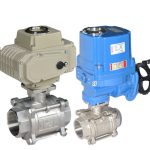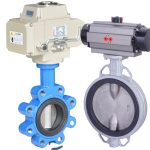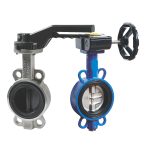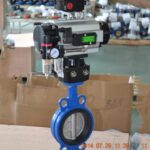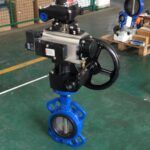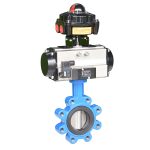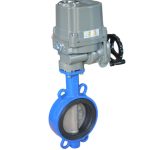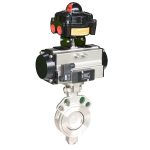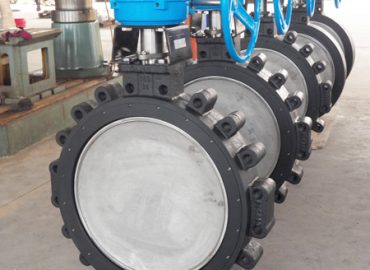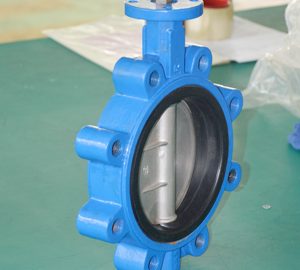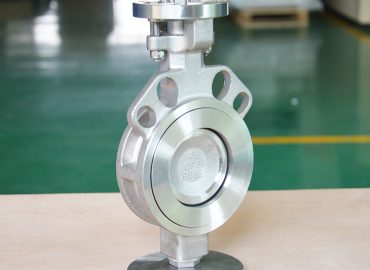Selecting the appropriate butterfly valve for your application is crucial to ensure optimal performance and cost-efficiency. With a variety of options available, it can be challenging to determine which type of butterfly valve is best suited for your needs. One key consideration when choosing between manual and automated butterfly valves is the cost difference. In this blog post, we will explore the various factors that contribute to the cost difference between 100mm manual and automated butterfly valves, providing insights to help you make an informed decision for your specific application.
Introduction
The cost difference between a manual and automated butterfly valve 100mm price is largely influenced by several factors, including the type of actuation mechanism, materials used, additional features, and the manufacturer. Manual butterfly valves, which can be either lever-operated or gear-operated, are generally more cost-effective upfront due to their simpler design and lower complexity. However, automated butterfly valves, which utilize pneumatic actuator, electric actuator, or hydraulic actuators, offer greater control and precision in regulating fluid flow, leading to increased efficiency and safety. While the initial cost of an automated butterfly valve may be higher than that of a manual valve, the long-term benefits such as reduced labor costs, better process control, and minimal human intervention can offset the higher upfront investment. Additionally, the cost of both manual and automated butterfly valves can vary depending on the material, size, and pressure rating, as well as the brand and manufacturer. Ultimately, when considering the cost difference between a 100mm manual and automated butterfly valve, it is essential to evaluate not only the initial purchase price but also the long-term operational costs and return on investment based on your specific application requirements.
Brief overview of butterfly valves
Butterfly valves are a type of flow control device commonly used in various industrial applications, such as water and wastewater treatment, oil and gas, and chemical processing. They consist of a disc mounted on a rotating shaft, which is positioned in the center of a pipe to regulate or isolate the flow of fluid. When the valve is fully open, the disc aligns with the direction of the fluid flow, allowing for minimal resistance and pressure drop. Conversely, when the valve is closed, the disc rotates perpendicular to the flow, effectively blocking the passage of fluid. Butterfly valves are known for their compact design, ease of operation, and cost-effectiveness, making them a popular choice for many applications. Available in different materials, sizes, and pressure ratings, butterfly valves can be operated manually using a lever or gear, or automatically through the use of actuators such as pneumatic, electric, or hydraulic systems. Selecting the appropriate butterfly valve for your specific needs requires careful consideration of factors such as cost, performance, and maintenance requirements.
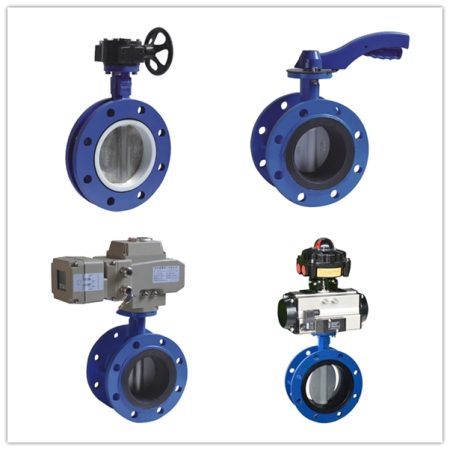
Importance of selecting the appropriate type of butterfly valve
Selecting the appropriate type of butterfly valve is crucial to ensure optimal system performance, safety, and cost-effectiveness. The wrong choice of valve can result in poor flow control, increased energy consumption, pressure drop, and costly downtime due to maintenance or repair needs. For example, a manual butterfly valve may be sufficient for a simple, low-pressure application, but an automated valve may be required for more complex systems with stringent process control requirements. Understanding the specific needs of your application, such as flow rate, temperature, pressure, and fluid characteristics, is critical when selecting a butterfly valve. Additionally, factors such as ease of maintenance, installation, and overall cost should also be considered. By selecting the appropriate butterfly valve, you can ensure that your system operates efficiently, safely, and reliably with minimal downtime and maintenance costs.
Introduction to manual and automated butterfly valves
Manual butterfly valves and automated butterfly valves are the two main types of butterfly valves available on the market. Manual butterfly valves are operated by a lever or gear, which manually rotates the disc to regulate the flow of fluid. They are typically less complex and more cost-effective than their automated counterparts, making them a popular choice for many simple applications. Automated butterfly valves, on the other hand, utilize an actuator, such as a pneumatic, electric, or hydraulic system, to precisely control the valve’s position and maintain process parameters. While more expensive upfront, automated butterfly valves offer greater control and precision in regulating fluid flow, leading to increased efficiency and safety. The choice between manual and automated butterfly valves depends on the specific needs of your application, such as the level of control required, budget, and maintenance considerations.
Manual Butterfly Valves
Manual butterfly valve are widely used in various industries due to their simplicity, efficiency, and cost-effectiveness. They are operated manually using a lever or gear to rotate the disc and regulate the flow of fluid. Lever-operated butterfly valves are commonly used for low-pressure applications, while gear-operated butterfly valves are used for higher pressure ratings. Manual butterfly valves are available in different materials, such as cast iron, stainless steel, and PVC, which makes them suitable for a wide range of fluids. They are also available in different sizes, from small diameters to larger ones, making them adaptable to various applications. One key advantage of manual butterfly valves is their straightforward operation, which requires minimal training and is easy to maintain. They are also less expensive than automated butterfly valves, making them a popular choice for applications with budget constraints or simple operational requirements. However, manual butterfly valves have limitations when it comes to precise flow control and maintaining process parameters, which may not be sufficient for more complex applications that require strict process control. Overall, manual butterfly valves are a reliable and cost-effective option for many applications, especially those with low-pressure requirements and minimal need for precision control.
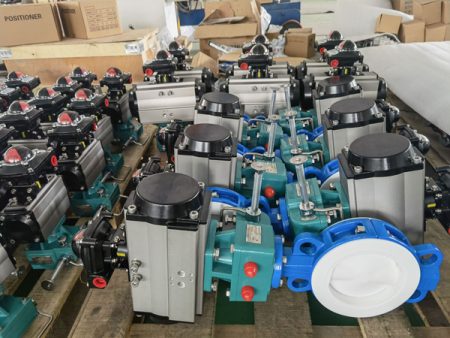
Description and operation of manual butterfly valves
Manual butterfly valves consist of a circular disc, which is mounted on a rotating shaft in the center of a pipe. The disc can be rotated using a lever or gear to control the flow of fluid through the valve. When the valve is fully open, the disc aligns with the direction of the fluid flow, providing minimal resistance and pressure drop. Conversely, when the valve is closed, the disc rotates perpendicular to the flow, blocking the passage of fluid. Manual butterfly valves are designed for ease of operation, which requires minimal training and maintenance. Lever-operated butterfly valves typically require only a simple 90-degree turn to open or close, while gear-operated butterfly valves may require several turns due to their higher pressure ratings. The disc design of manual butterfly valves also allows for easy cleaning and inspection, minimizing downtime and maintenance costs. Overall, manual butterfly valves are an effective and straightforward solution for controlling fluid flow in many applications, making them a popular choice across various industries.
Advantages of manual butterfly valves
Manual butterfly valves offer several advantages in many applications. Firstly, they are cost-effective compared to automated butterfly valves. They require less installation time and can be operated with minimal training, which translates to lower labor costs. Secondly, manual butterfly valves are easy to maintain since they have a simple design and fewer components that require inspection. The disc design of manual butterfly valves makes them easy to clean by wiping or flushing, saving time and effort. Thirdly, manual butterfly valves provide a quick shut-off capability that can stop fluid flow immediately, making them ideal for emergency situations. Finally, manual butterfly valves are typically more compact than other types of valves, which makes them suitable for applications with limited space. Overall, manual butterfly valves offer a reliable and cost-effective solution for many low-pressure applications where precise control is not required.
Factors affecting the cost of manual butterfly valves
Several factors can affect the cost of manual butterfly valves. The first factor is the size of the valve, with larger valves generally costing more than smaller ones due to higher material and manufacturing costs. The second factor is the material of construction, with materials such as stainless steel being more expensive than materials like PVC or cast iron. The third factor is the pressure rating, with higher-pressure valves requiring more robust materials and design, resulting in a higher cost. The fourth factor is the type of connection, with flanged connections usually being more expensive than threaded or grooved connections. Finally, additional features such as locking devices, extended handles, or special coatings can also increase the cost of manual butterfly valves. To minimize costs while still ensuring optimal performance, it is essential to carefully consider the specific requirements of the application and select a valve that meets those needs without over-specifying or under-specifying the valve.
Automated Butterfly Valves
Automated butterfly valves are a type of butterfly valve that utilize an actuator to precisely control the position and movement of the valve disc. Actuators can be pneumatic, electric, or hydraulic, and they provide automated control over the valve’s opening and closing through remote or automatic means. Automated butterfly valves offer several advantages over manual butterfly valves, including more precise flow control, increased safety, and reduced labor costs. They are ideal for applications that require strict process control, such as chemical or food processing, where precise control over fluid flow is essential for product quality and consistency. Automated butterfly valves can also be remotely operated and monitored, reducing the need for on-site personnel and increasing process efficiency. While more expensive than manual butterfly valves upfront, automated butterfly valves offer significant long-term cost savings due to their ability to maintain precise control over fluid flow, reducing waste and improving operational efficiency.
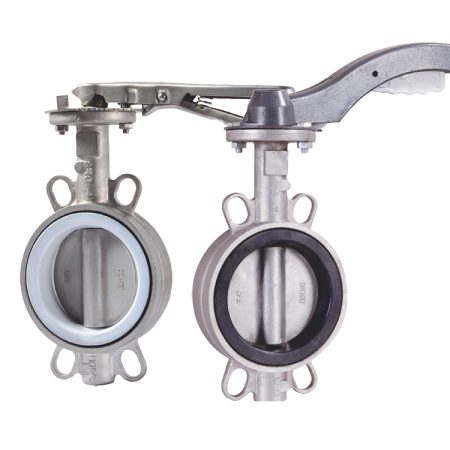
Description and operation of automated butterfly valves
Automated butterfly valves operate similarly to manual butterfly valves, but they are equipped with an actuator that provides automated control over the valve’s position and movement. Actuators can be pneumatic, electric, or hydraulic, and they provide precise control over the valve’s opening and closing through remote or automatic means. Automated butterfly valves can be programmed to maintain process parameters such as flow rate, pressure, and temperature, ensuring consistent product quality and safety. They can also be remotely monitored and controlled, reducing the need for on-site personnel and improving process efficiency. The operation of automated butterfly valves varies depending on the type of actuator used, but they typically require less human intervention, resulting in reduced labor costs and increased safety. Overall, automated butterfly valves offer a reliable and efficient solution for controlling fluid flow in various industries, making them ideal for applications that require precise process control and automation.
Advantages of automated butterfly valves
Automated butterfly valves offer several advantages over manual butterfly valves, including increased precision, improved safety, and reduced labor costs. They provide more precise control over fluid flow, enabling operators to maintain consistent process parameters to ensure product quality and safety. Automated butterfly valves can be remotely monitored and controlled, reducing the need for on-site personnel and improving operational efficiency. They also offer increased safety by eliminating the need for human intervention in hazardous or hard-to-reach areas. Additionally, automated butterfly valves have a longer lifespan than manual butterfly valves due to their ability to operate with greater accuracy and consistency, reducing maintenance costs. While the upfront cost of automated butterfly valves is higher than manual butterfly valves, the long-term cost savings resulting from increased precision, safety, and efficiency make them a cost-effective solution for many applications. Overall, automated butterfly valves offer a reliable and efficient solution for controlling fluid flow in various industries, making them ideal for applications that require precise process control and automation.
Factors affecting the cost of automated butterfly valves
Several factors can affect the cost of automated butterfly valves. The first factor is the size of the valve, with larger valves generally costing more than smaller ones due to higher material and manufacturing costs. The second factor is the type of actuator used, with pneumatic actuators being less expensive than electric or hydraulic actuators. The third factor is the material of construction, with materials such as stainless steel being more expensive than materials like PVC or cast iron. The fourth factor is the pressure rating, with higher-pressure valves requiring more robust materials and design, resulting in a higher cost. The fifth factor is the level of automation required, with simple on/off valves costing less than feedback control valves that can maintain precise process parameters. Finally, additional features such as locking devices, extended handles, or special coatings can also increase the cost of automated butterfly valves. To minimize costs while still ensuring optimal performance, it is essential to carefully consider the specific requirements of the application and select a valve that meets those needs without over-specifying or under-specifying the valve.
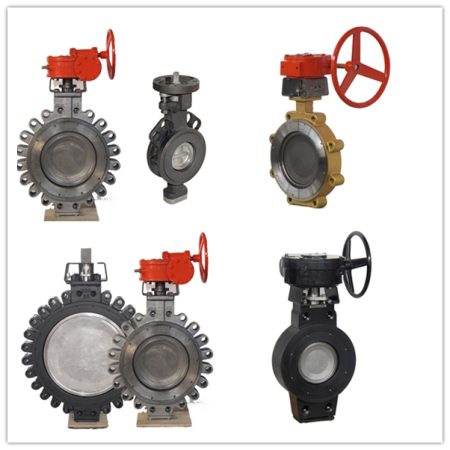
Cost Comparison: Manual vs. Automated Butterfly Valves
When comparing the costs of manual and automated butterfly valves, several factors need to be considered. Manual butterfly valves are typically less expensive than automated butterfly valves due to their simpler design and lack of an actuator. They require less installation time and can be operated with minimal training, which translates to lower labor costs. On the other hand, automated butterfly valves offer increased precision, improved safety, and reduced labor costs in the long run. They enable operators to maintain consistent process parameters to ensure product quality and safety. Automated butterfly valves can be remotely monitored and controlled, reducing the need for on-site personnel and improving operational efficiency. While the upfront cost of automated butterfly valves is higher than manual butterfly valves, the long-term cost savings resulting from increased precision, safety, and efficiency make them a cost-effective solution for many applications.
It is worth noting that the relative cost of manual vs. automated butterfly valves can vary widely depending on the specific application. For instance, applications that require precise process control may require an automated valve, while those that do not may be better suited for a manual valve. Additionally, larger valves or those requiring higher pressure ratings or special materials may be significantly more expensive regardless of whether they are manual or automated.
Overall, when selecting a butterfly valve for an application, it is essential to carefully consider the specific requirements of the application and weigh the costs and benefits of manual vs. automated butterfly valves. In some cases, the simplicity and low cost of a manual valve may be sufficient, while in others, the increased precision and safety of an automated valve may be necessary. By selecting the right valve for the job, operators can ensure optimal performance and cost-effectiveness over the life of the valve.
Price range for manual butterfly valves
The price range for manual butterfly valves can vary widely depending on several factors, including the size, material of construction, pressure rating, and type of connection. In general, smaller manual butterfly valves made from lower-cost materials such as PVC or cast iron can cost less than $100, while larger valves made from high-grade materials such as stainless steel can cost several thousand dollars. The type of connection can also affect the price, with threaded or grooved connections generally costing less than flanged connections. To minimize costs while still ensuring optimal performance, it is essential to carefully consider the specific requirements of the application and select a valve that meets those needs without over-specifying or under-specifying the valve. By selecting the right valve for the job, operators can ensure optimal performance and cost-effectiveness over the life of the valve.
Price range for automated butterfly valves
The price range for automated butterfly valves can vary widely depending on several factors, including the size, material of construction, pressure rating, type of actuator used, and level of automation. In general, smaller automated butterfly valves with pneumatic actuators can cost several hundred dollars, while larger valves with electric or hydraulic actuators and advanced feedback control systems can cost several thousand dollars. The material of construction can also affect the price, with higher-cost materials such as stainless steel adding to the overall cost of the valve. Additionally, the level of automation required can significantly affect the price, with more advanced feedback control systems and remote monitoring capabilities adding to the cost. To minimize costs while still ensuring optimal performance, it is essential to carefully consider the specific requirements of the application and select a valve that meets those needs without over-specifying or under-specifying the valve. By selecting the right valve for the job, operators can ensure optimal performance and cost-effectiveness over the life of the valve.
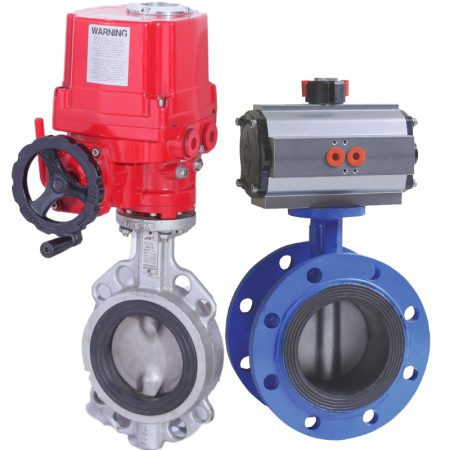
Factors influencing the cost difference
Several factors can influence the cost difference between manual and automated butterfly valves. The first factor is the design and materials of construction, with automated butterfly valves requiring additional components such as an actuator and control system. These additional components add to the overall cost of the valve. The second factor is the level of automation required, with more advanced feedback control systems and remote monitoring capabilities adding significantly to the cost of automated butterfly valves. The third factor is the type of actuator used, with electric or hydraulic actuators typically costing more than pneumatic actuators. The fourth factor is the size and pressure rating of the valve, with larger or higher-pressure valves requiring more robust materials and design, resulting in a higher cost. The fifth factor is the specific application requirements, with applications requiring precise process control or hazardous environments often requiring the use of automated butterfly valves, which are more expensive than manual butterfly valves. Overall, while manual butterfly valves are generally less expensive than automated butterfly valves, the specific application requirements and desired level of performance and control will ultimately determine which type of valve is the most cost-effective solution.
Choosing the Right Butterfly Valve for Your Application
Choosing the right butterfly valve for your application is critical to ensure optimal performance, reliability, and cost-effectiveness. To select the right butterfly valve, several factors must be considered. The first factor is the material of construction, with the valve being made from a material that can withstand the fluid being transported or processed. The second factor is the size and pressure rating, with the valve being appropriately sized to handle the flow rate and pressure of the system. The third factor is the type of connection, with the valve connection matching the piping connection. The fourth factor is the level of automation required, with simple on/off valves being sufficient for some applications, while more advanced feedback control systems are required for others. The fifth factor is the specific application requirements, with applications requiring precise process control, hazardous environments, or high-temperature applications often requiring a more robust valve. By carefully considering these factors, operators can ensure they choose the right butterfly valve for their application, resulting in optimal performance, reliability, and cost-effectiveness.
Assessing your specific requirements
Assessing your specific requirements is critical when selecting a wafer butterfly valve for your application. The first step is to determine the type of fluid being transported or processed, as this will dictate the material of construction required for the valve. The second step is to determine the flow rate and pressure of the system, as this will dictate the size and pressure rating of the valve. The third step is to consider the environment in which the valve will be operating, as this will influence the type of connection required and the level of automation needed. The fourth step is to determine the level of precision and control required, as this will dictate the level of automation needed and the type of feedback control system required. The fifth step is to consider any special requirements of the application, such as high-temperature environments or hazardous materials, as these may require a more robust valve. By assessing these specific requirements, operators can ensure they choose the right butterfly valve for their application, resulting in optimal performance, reliability, and cost-effectiveness.
Weighing the pros and cons of manual and automated butterfly valves
Weighing the pros and cons of manual and automated lug butterfly valves is critical when selecting the right valve for your application. Manual butterfly valves offer simplicity, lower upfront cost, and ease of operation, making them suitable for basic applications where precise control is not required. However, they lack the precision and control of automated butterfly valves, making them unsuitable for applications that require precise process control or hazardous environments. Automated butterfly valves offer increased precision, safety, and efficiency, making them suitable for applications that require precise process control or hazardous environments. However, they have a higher upfront cost, require more installation time, and may require specialized training to operate. By weighing the pros and cons of manual and automated butterfly valves in the context of specific application requirements, operators can ensure they select the right valve for optimal performance and cost-effectiveness over the life of the valve.
Importance of consulting with experts and manufacturers
Consulting with experts and manufacturers is essential when selecting a butterfly valve for your application. Experts, such as valve engineers or process control specialists, can provide valuable insights into the specific requirements of your application and recommend the most appropriate valve solution. Manufacturers can provide technical specifications, installation guidance, and application-specific recommendations to ensure optimal performance and reliability. Additionally, manufacturers can offer customization options to meet unique application requirements, and provide post-sale support and maintenance services to ensure the valve continues to operate at peak performance over its life cycle. By consulting with experts and manufacturers, operators can ensure they select the right butterfly valve for their application, resulting in optimal performance, reliability, and cost-effectiveness over the life of the valve.
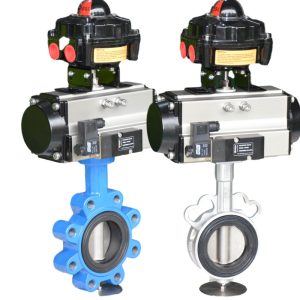
Conclusion
In conclusion, selecting the right pneumatic butterfly valve for your application requires careful consideration of several factors, including material of construction, size and pressure rating, type of connection, level of automation, and specific application requirements. Weighing the pros and cons of manual and automated butterfly valves in the context of specific application requirements is critical to ensure optimal performance and cost-effectiveness over the life of the valve. Consulting with experts and manufacturers can provide valuable insights and recommendations to help operators select the most appropriate valve solution, customize it to meet unique requirements, and ensure optimal performance and reliability through post-sale support and maintenance services. By carefully assessing specific requirements and consulting with experts and manufacturers, operators can ensure they select the right butterfly valve for their application, resulting in safe, efficient, and cost-effective operation of their system.
Recap of the cost difference between manual and automated butterfly valves
In, the cost difference between manual and automated butterfly valves is influenced by several factors. The design and materials of construction play a significant role, with automated butterfly valves requiring additional components such as an actuator and control system, which add to the overall cost of the valve. The level of automation required also affects the cost, with more advanced feedback control systems and remote monitoring capabilities adding significantly to the cost of automated butterfly valves. The type of actuator used is another key factor, with electric or hydraulic actuators typically costing more than pneumatic actuators. The size and pressure rating of the valve also impact the cost, with larger or higher-pressure valves requiring more robust materials and design and, therefore, costing more. Finally, the specific application requirements are critical, with applications requiring precise process control or hazardous environments often requiring the use of automated butterfly valves, which are more expensive than manual butterfly valves. While manual butterfly valves are generally less expensive than automated butterfly valves, it’s important to recognize that the specific application requirements will ultimately determine the most cost-effective solution. Therefore, careful consideration of these cost factors is essential when selecting the most appropriate butterfly valve for your application to ensure optimal performance, reliability, and cost-effectiveness over the life of the valve.
Emphasis on selecting the appropriate valve based on your specific needs and budget
Emphasis on selecting the appropriate butterfly valve based on your specific needs and budget is critical to ensuring optimal performance, reliability, and cost-effectiveness. Operators must carefully assess their specific requirements, including the type of fluid being transported or processed, the flow rate and pressure of the system, the environment in which the valve will be operating, the level of precision and control required, and any special requirements of the application, such as high-temperature environments or hazardous materials. By weighing these factors against the available budget, operators can select the most appropriate valve solution that meets their specific needs while staying within budget. While cost is an essential consideration, it should not be the only factor when selecting a butterfly valve, as choosing the wrong valve can result in reduced performance, reliability, and increased costs over the life of the valve. Therefore, emphasis on selecting the appropriate butterfly valve based on your specific needs and budget requires careful consideration of all relevant factors to ensure optimal performance, reliability, and cost-effectiveness over the life of the valve.



